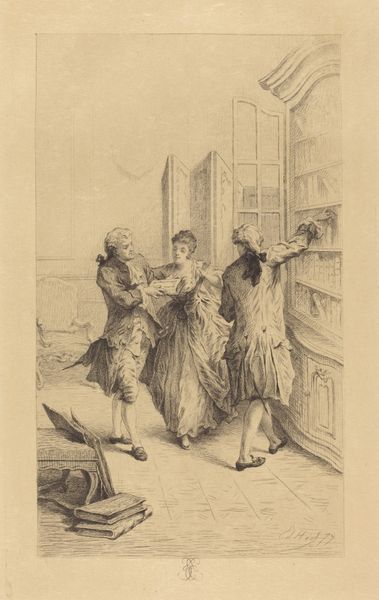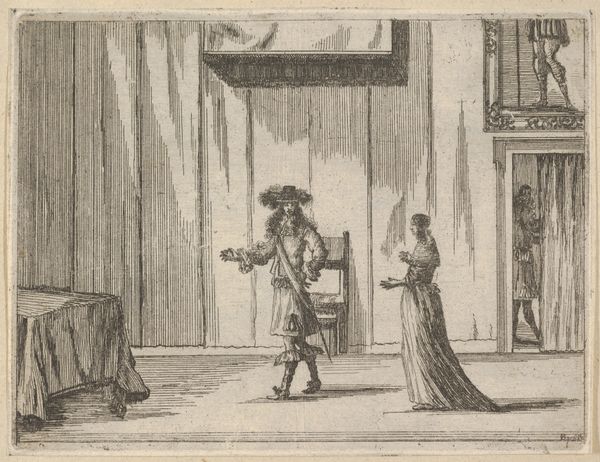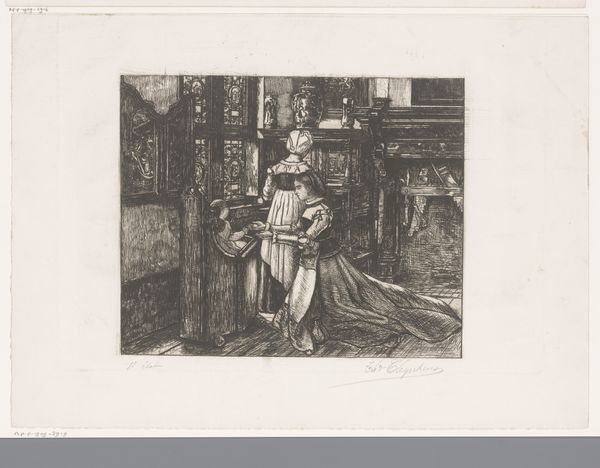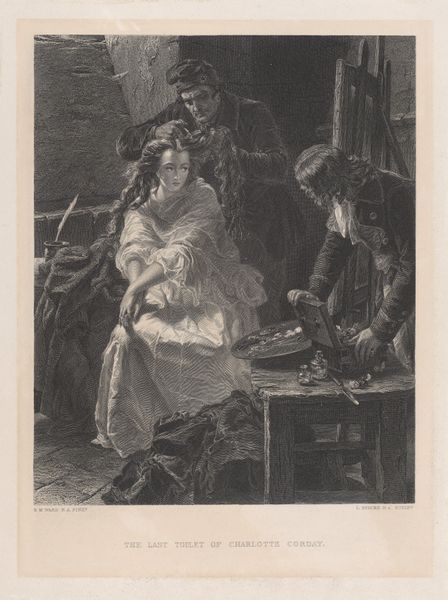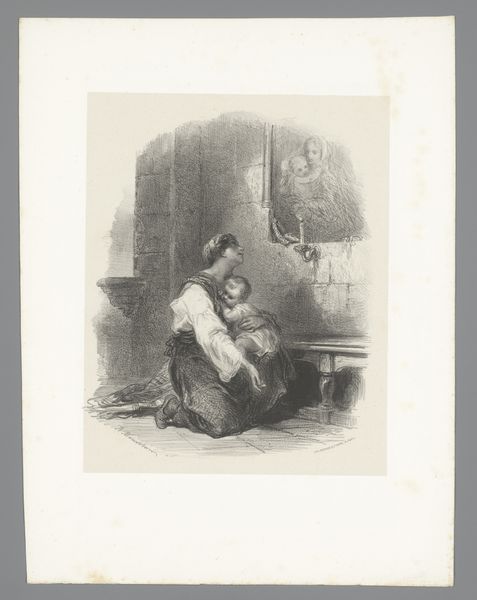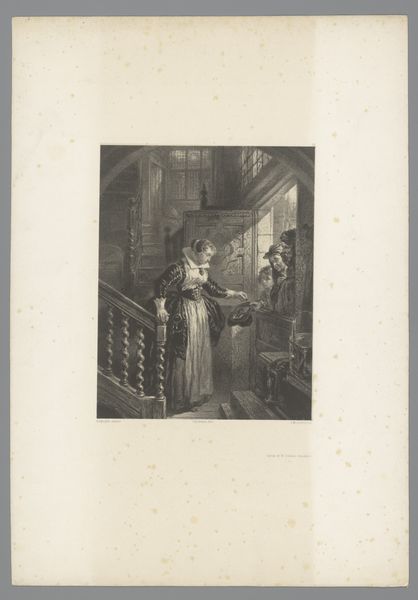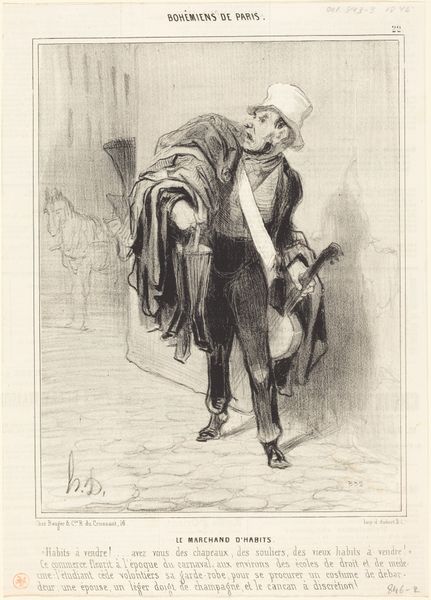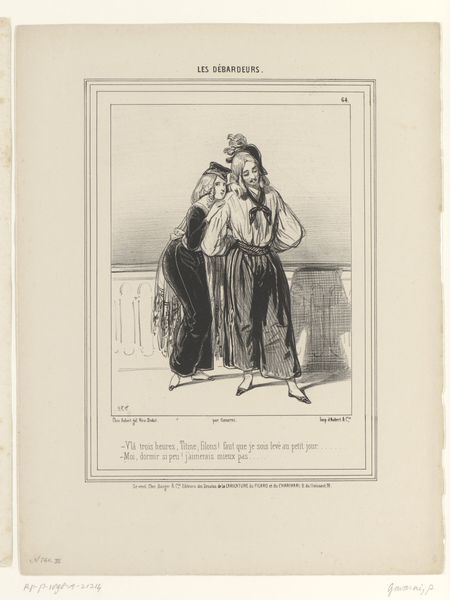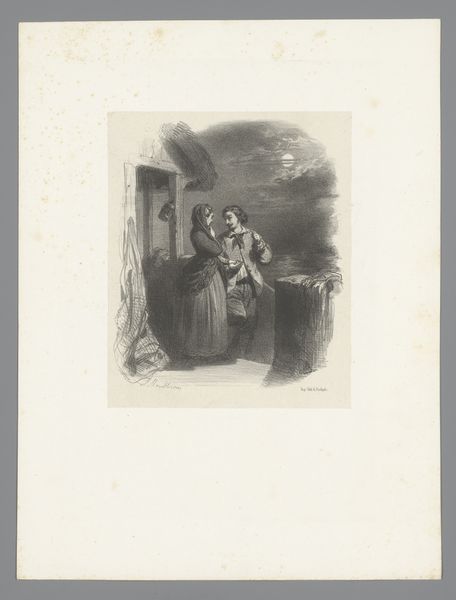
The Lady of Monsoreau (La Dame de Monsoreau) 1830 - 1900
0:00
0:00
Dimensions: Image: 5 1/2 × 4 1/16 in. (14 × 10.3 cm) Sheet: 9 3/4 × 6 11/16 in. (24.8 × 17 cm)
Copyright: Public Domain
Curator: This is "The Lady of Monsoreau," an engraving created sometime between 1830 and 1900, currently housed at the Metropolitan Museum of Art. It presents a scene brimming with intrigue, drawn in exquisite detail. Editor: Intrigue is right! My first thought goes to melodrama—the dramatic lighting, the figures poised mid-action. Someone’s clearly making an unwelcome entrance, judging by the upended chair and the gentleman brandishing his sword. Curator: Precisely. It encapsulates the Romantic sensibility that permeated 19th-century art, leaning into emotional intensity and historical narratives. The print draws inspiration from Alexandre Dumas’s novel of the same name, a tale of forbidden love and political turmoil during the reign of Henri III. Editor: So, it's a moment frozen from a much larger, undoubtedly scandalous story. I’m immediately drawn to the Lady herself, the look of barely suppressed fear. How much power does she have in this scenario, and to what extent is she just a pawn? The composition, with the intruder positioned above, literally looking down on her, speaks volumes. Curator: Indeed. Romanticism often grappled with power dynamics within social structures. Here, the masked figure, entering through what appears to be an opening in the wall, introduces an element of subversion, while the gentleman is the immediate embodiment of established authority, reacting against this intrusion to protect the woman. But, there's certainly an undercurrent of suspicion… Who is protecting her from whom? And to what ends? Editor: Exactly! The narrative raises questions about gender roles and protection versus oppression. Are we meant to see the male figures as saviors, or potential captors in their own right? Also, note the almost theatrical way that all this drama is being played out. And who is the Lady signaling for help? It’s almost cinematic in the way it evokes suspense. Curator: You bring up a critical point about theatricality. These narrative prints often served a vital public role, circulating popular stories and constructing historical memory within the rapidly expanding public sphere of the 19th century. The printing press became an indispensable part of democratizing information. Editor: That said, the artwork's political intentions still intrigue me, in a late Modernity context. This scene makes one ask urgent questions about authority, justice, the dynamics of spectatorship, and power hierarchies. The more you start probing, the less obvious it becomes what is actually going on. Curator: Yes, that's part of what continues to invite revisitation and analysis. Seeing the artwork contextualized through our distinct approaches yields many opportunities to examine how cultural norms inform visual narratives, while highlighting art's function as a means of social engagement. Editor: Right. It proves that context informs aesthetic judgements in vital, insightful ways, prompting relevant discussions.
Comments
No comments
Be the first to comment and join the conversation on the ultimate creative platform.

